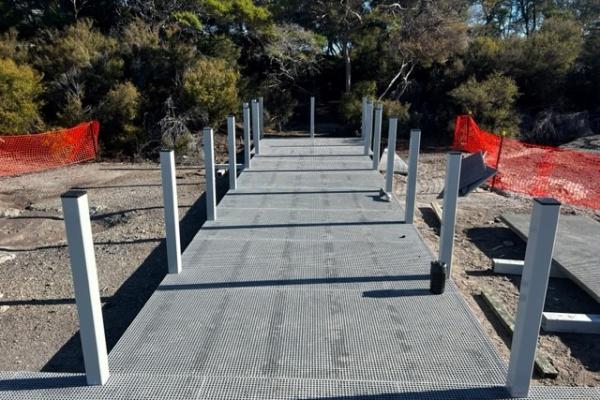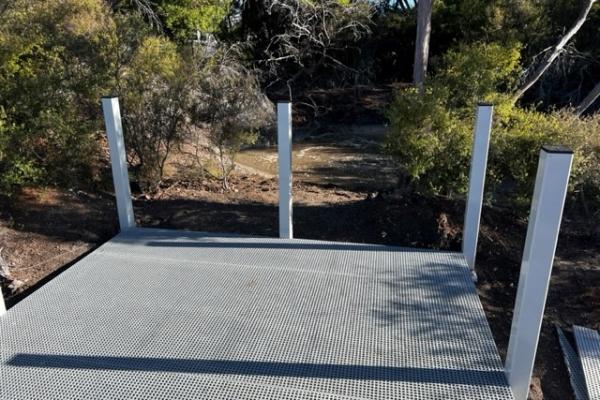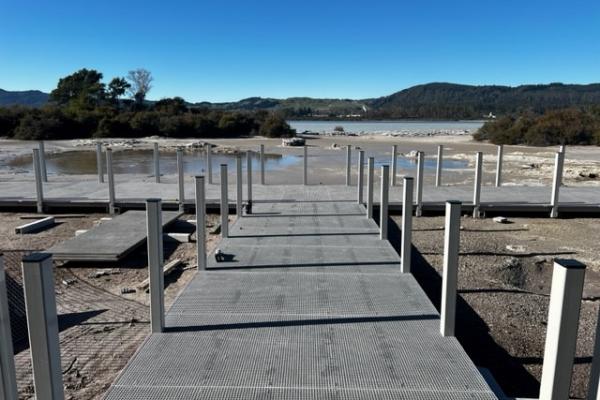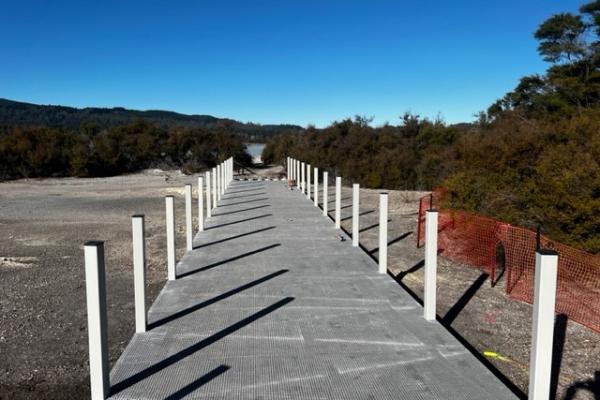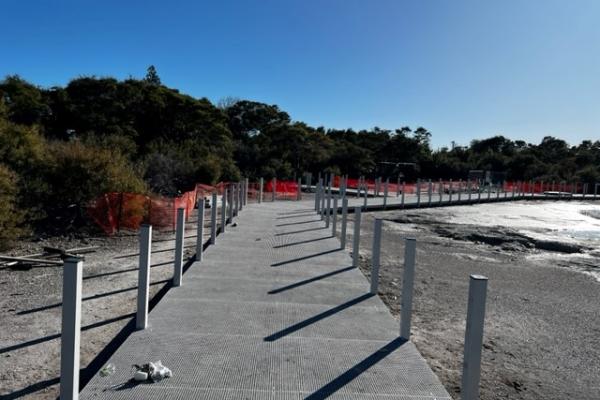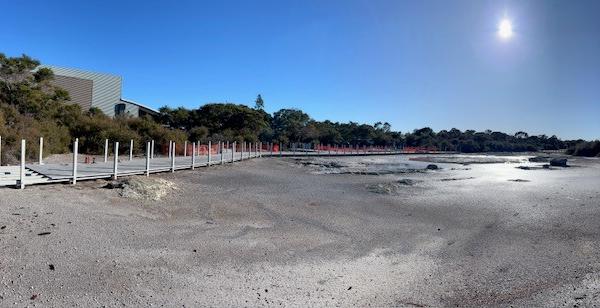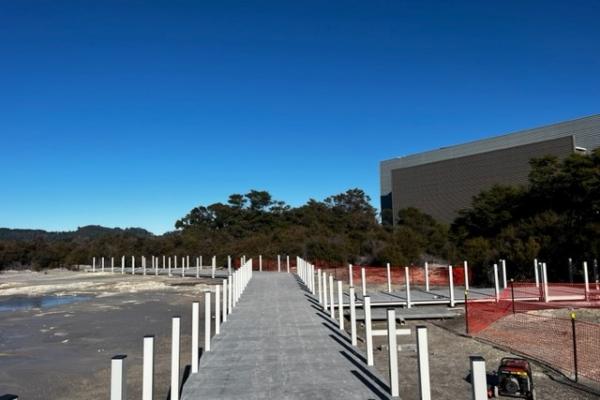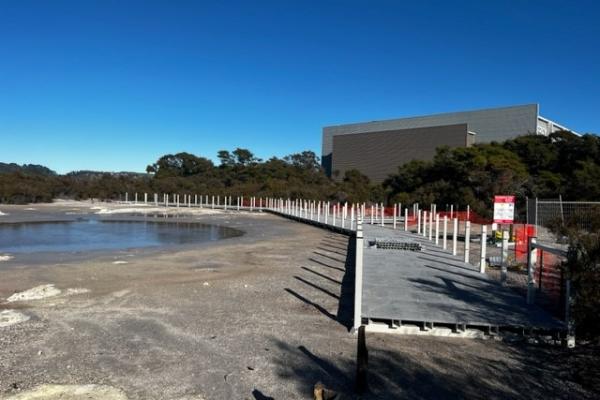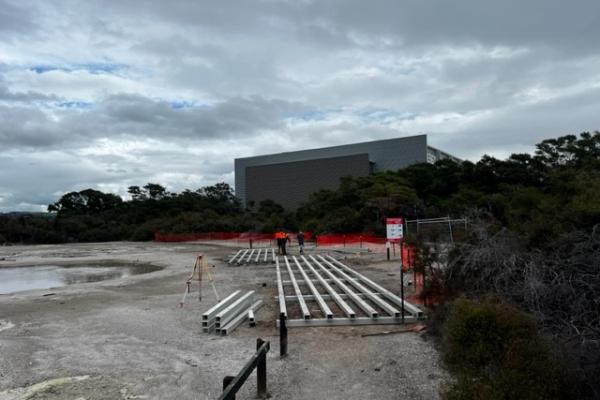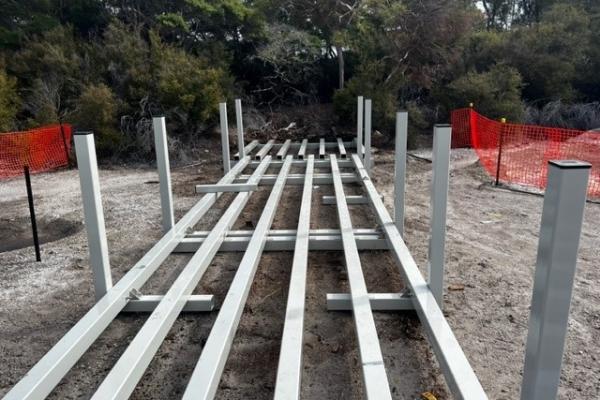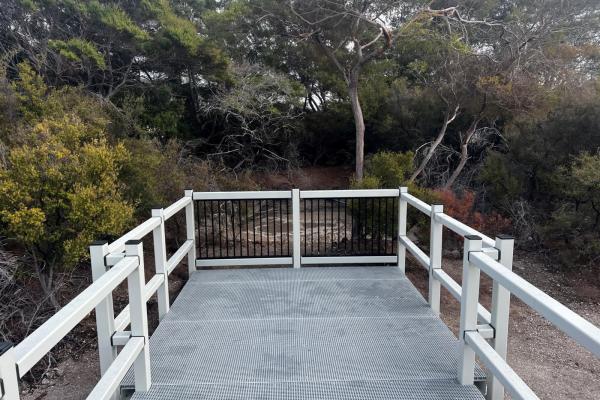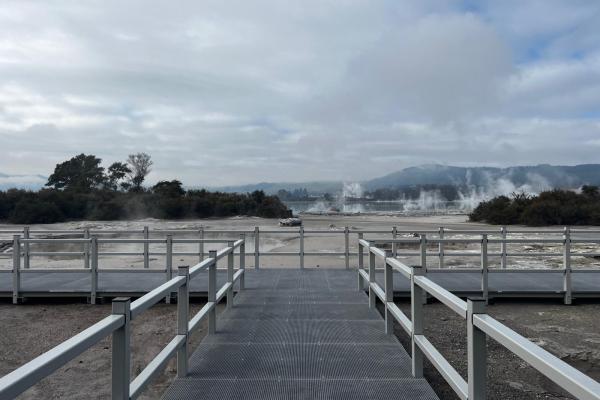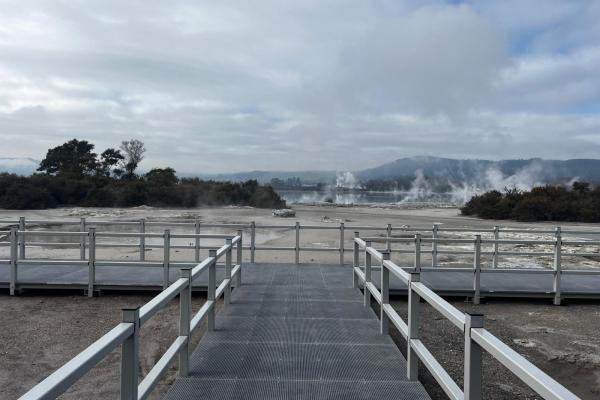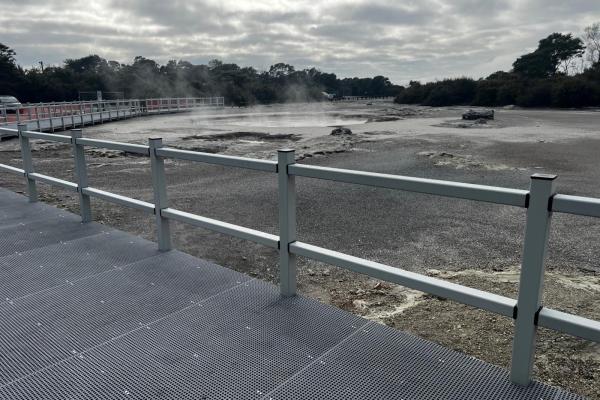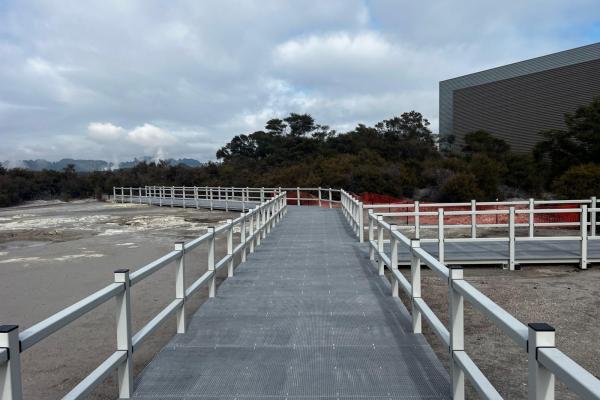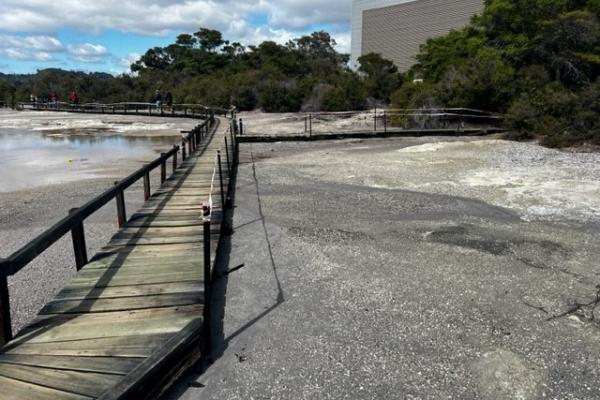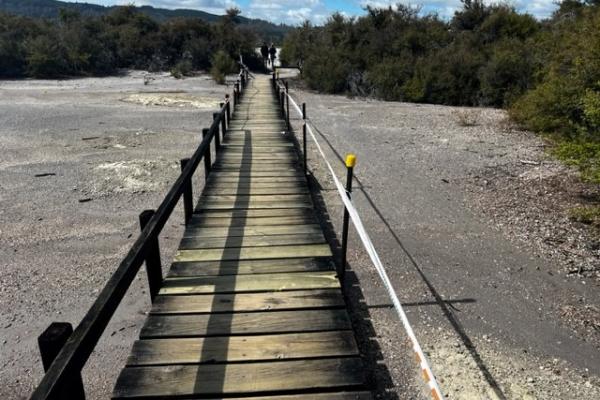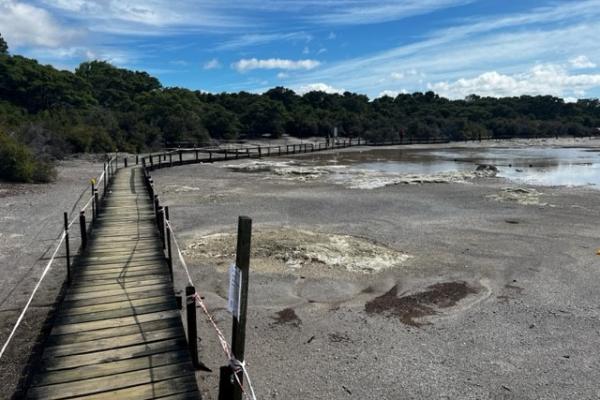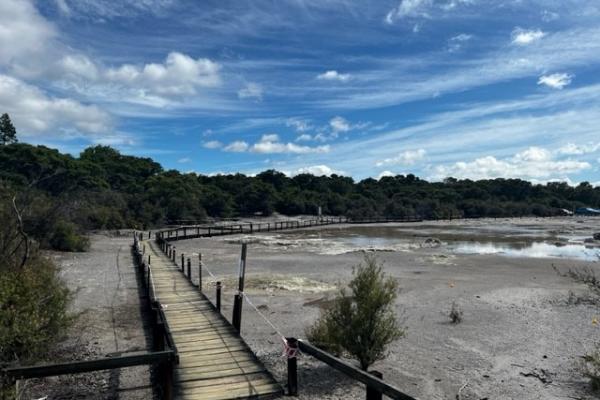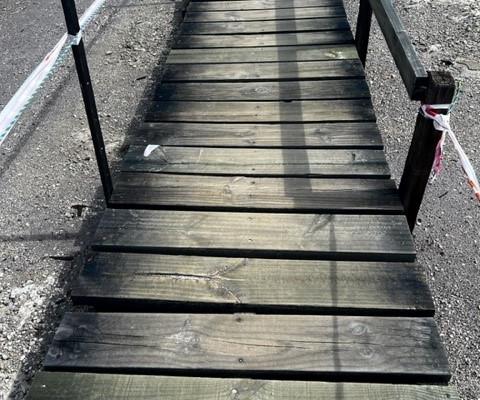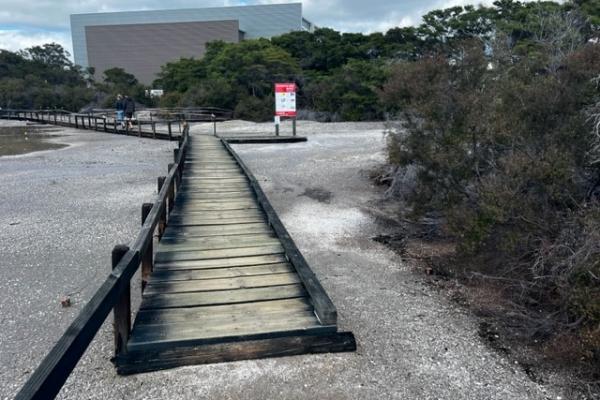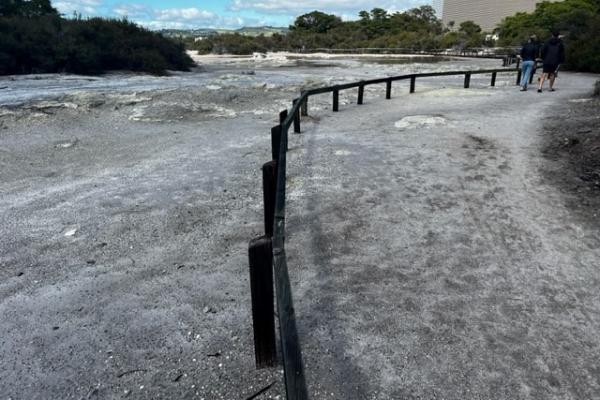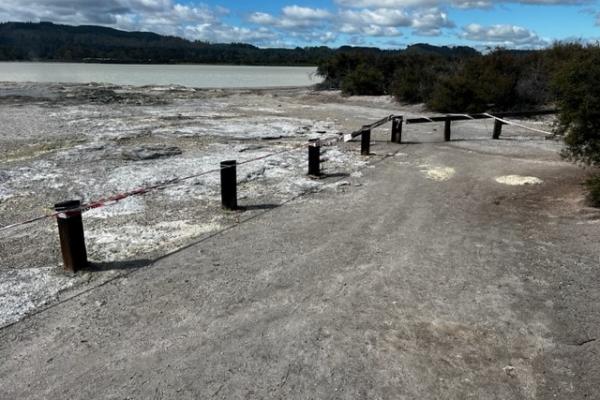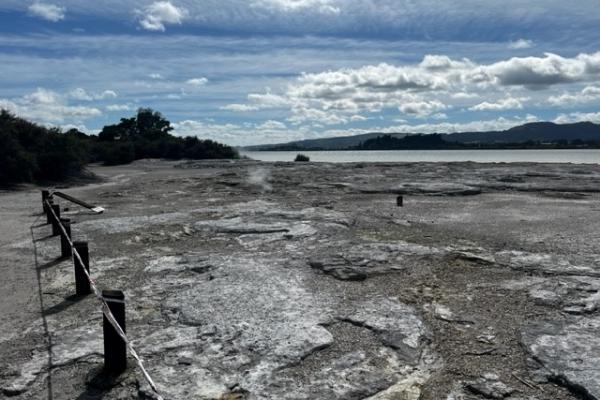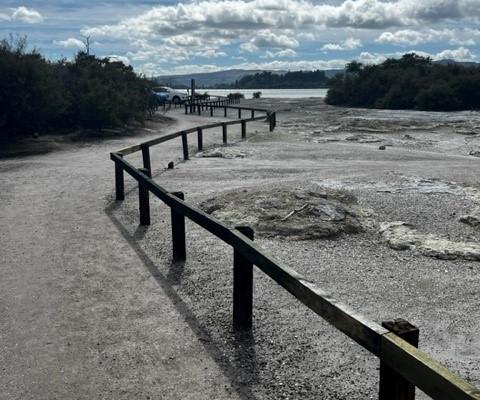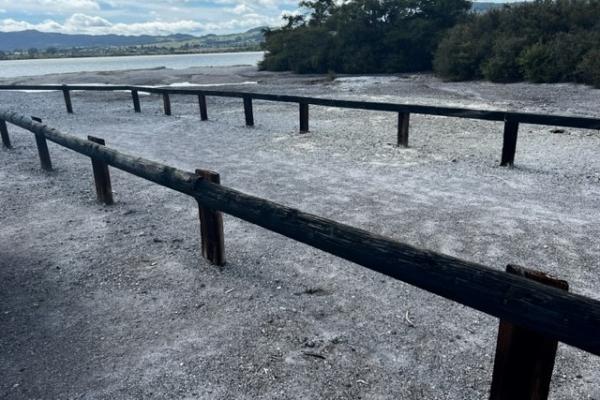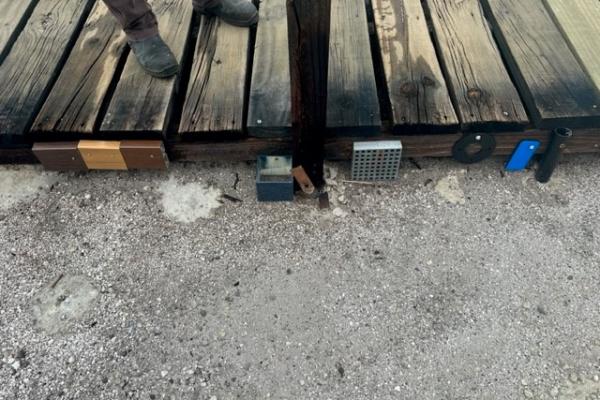Read on to discover how a modern building material provided the solution to rising maintenance costs and safety issues for tourism infrastructure owners in a geothermal landscape in New Zealand.
The Rotorua region is world renowned for its amazing scenery and geothermal activity. And while breathtakingly beautiful to look at, gases emitted from geothermal activity mean that traditional materials like timber and steel are highly prone to rot and corrosion; and the ground itself is very unstable with geothermal springs constantly changing location.
The existing timber structure at Sulphur Point on Lake Rotorua required significant annual maintenance to keep it open and operationally safe. The area also contributes significantly to tourism dollars realised by the community and ensuring the boardwalks ongoing viability was paramount to Rotorua Lakes Council.
Replacing the old timber boardwalk was given a lot of thought and consideration by Rotorua Lakes Council with potential materials sampled on site for years for their performance in the heat and chemicals of the geothermal environment.
After several years Wagners Fibre Reinforced Polymer (FRP) structural profiles still looked brand new while other materials being considered for the project were severely rotted or corroded.
Key challenges for Wagners included designing a substructure with no driven or piled foundations that were strong and capable of spanning wide sections to accommodate quickly and dramatically changing ground conditions.
The team went for a floating foundation that allowed the structure to move independently as ground forces heaved and fell. And because each profile in its own right had a level of flexibility owing to the elastic modulus of FRP the structure would naturally contour to the changing shape of the landscape.
By choosing FRP as the material of choice for the Sulphur Point boardwalk and bridges project, Rotorua Lakes Council is set to significantly reduce costs associated with ongoing repair and maintenance of the old timber structure.
They have also significantly shifted the needle on the structure’s lifespan given that FRP can achieve a design life of 100-years, which in turn will positively impact Rotorua Lakes Council’s capital expenses budget moving forward.
